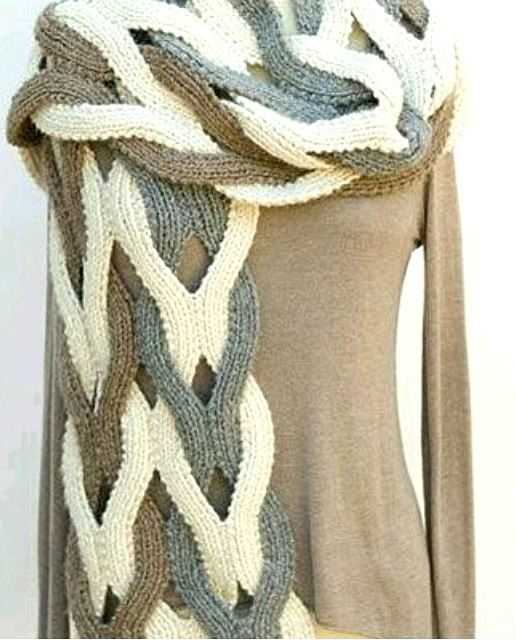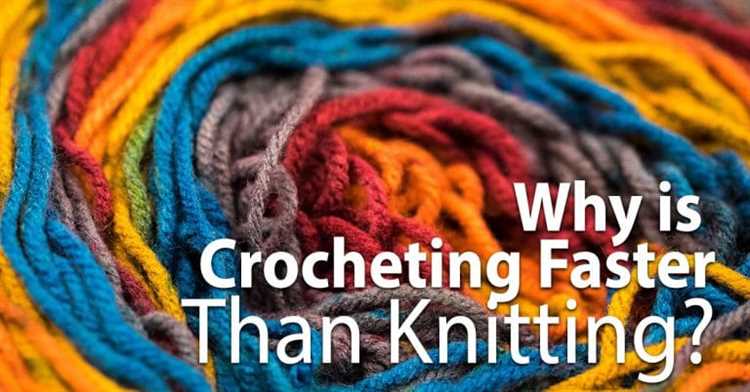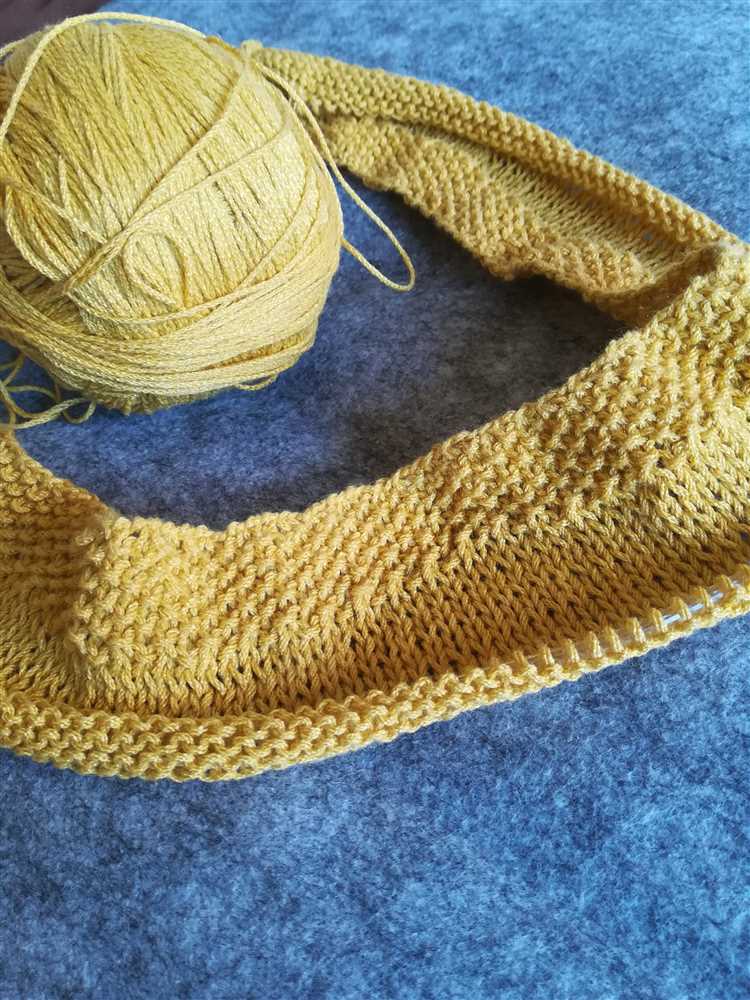Knitting and crocheting are two popular forms of needlework that have been around for centuries. Both crafts involve creating fabric using yarn and a set of needles or hooks, but they differ in their techniques and the skills required. Many people wonder which one is harder: knitting or crocheting?
Knitting involves using a pair of long, pointed needles to create a fabric by interlocking loops of yarn. It requires the ability to hold and manipulate two needles simultaneously, as well as the coordination to work with multiple stitches at once. Knitting can be challenging for beginners who are not used to the technique, as it requires a certain level of skill and practice to maintain an even tension and create uniform stitches.
Crocheting, on the other hand, uses a single hook to create fabric by pulling loops of yarn through other loops. It is a more forgiving craft for beginners, as crocheting only requires the use of one tool and one stitch at a time. However, crocheting can be more difficult to master in terms of intricate stitch patterns and shaping techniques. It requires a different set of hand movements and coordination than knitting, making it slightly more challenging in some aspects.
In conclusion, both knitting and crocheting have their own challenges and learning curves. Some people may find knitting more difficult due to its complexity and the need for two needles, while others may struggle with crocheting’s unique hand movements. Ultimately, the difficulty of each craft depends on the individual and their willingness to practice and learn new skills. So, whether you choose knitting or crocheting, remember that both crafts can be rewarding and enjoyable with time and dedication.
Comparison of Knitting and Crocheting Techniques
Knitting and crocheting are two popular crafts that involve creating fabric from yarn or thread using different techniques. While they share some similarities, they also have distinct differences in terms of the skills required and the end result. Let’s break down the key differences between knitting and crocheting:
| Aspect | Knitting | Crocheting |
|---|---|---|
| Tools | Uses two knitting needles | Uses a crochet hook |
| Stitches | Uses various stitch patterns, such as knit and purl | Uses a single crochet stitch or a combination of stitches |
| Complexity | Can be more intricate and detailed | Generally simpler and quicker to learn |
| Tension Control | Requires consistent tension throughout | Allows for more flexibility in tension control |
| End Result | Produces a stretchy and drapable fabric | Produces a denser and stiffer fabric |
| Repairability | Can be more challenging to fix mistakes | Easy to unravel and fix mistakes |
| Applications | Well-suited for garments, accessories, and complex patterns | Ideal for blankets, scarves, and decorative items |
In summary, knitting and crocheting differ in terms of tools, stitches, complexity, tension control, end result, repairability, and applications. Knitting tends to be more intricate, requiring consistent tension, and produces a stretchier fabric. On the other hand, crocheting is generally simpler, offers more flexibility in tension control, and creates a denser fabric. Both crafts have their own unique charm and can be enjoyed by individuals with different skill levels.
Skill Level and Learning Curve
When it comes to skill level and learning curve, both knitting and crocheting have their own challenges and advantages.
Knitting is often considered to have a steeper learning curve compared to crocheting. This is because knitting involves using two needles and creating intricate patterns with different stitches. It requires the knitter to have good hand-eye coordination and the ability to manipulate multiple needles at once.
Crocheting, on the other hand, uses just one hook and involves stitching loops together. Many people find crocheting to be easier to learn and pick up quickly. The basic stitches in crocheting are simple and can be mastered with practice.
However, as with any craft, both knitting and crocheting require time and patience to develop the necessary skills. The more complex patterns and stitches in both crafts can be challenging and may take time to perfect.
It is important to note that individual learning curves can vary greatly. Some people may find knitting to be easier, while others may prefer crocheting. It ultimately comes down to personal preference and comfort.
- Knitting:
- Steeper learning curve
- Requires good hand-eye coordination
- Involves using two needles
- Creates intricate patterns with different stitches
- Crocheting:
- Easier to learn and pick up quickly
- Basic stitches are simple and can be mastered with practice
- Involves using just one hook
- Stitches loops together
Overall, both knitting and crocheting have their own unique challenges and rewards. Whether you choose to learn knitting or crocheting, it’s important to start with the basics and practice regularly to improve your skills. With time and dedication, you can become proficient in either craft and create beautiful, handmade items.
Tools and Materials
Both knitting and crocheting require a set of tools and materials to create various projects. While some tools and materials may overlap between the two crafts, there are also differences in what is needed.
Knitting Tools and Materials:
- Knitting needles: These come in different sizes and materials, such as metal, bamboo, or plastic.
- Yarn: A variety of yarns can be used for knitting, including different weights, fibers, and colors.
- Tape measure: Used for measuring gauge and determining the size of the finished project.
- Scissors: Necessary for cutting yarn and weaving in ends.
- Stitch markers: These help to mark specific stitches or sections of a pattern.
- Tapestry needle: Used for weaving in ends and seaming pieces together.
- Row counter: Useful for keeping track of the number of rows or pattern repeats.
- Stitch holders: These hold stitches temporarily when working on other sections of the project.
Crocheting Tools and Materials:
- Crochet hooks: Available in various sizes and materials such as metal, plastic, or wood.
- Yarn: Similar to knitting, a wide range of yarns can be used for crochet projects.
- Tape measure: Used for measuring gauge and determining the size of the finished project.
- Scissors: Needed for cutting yarn and weaving in ends, just like in knitting.
- Stitch markers: Used for marking specific stitches or sections.
- Tapestry needle: Used for weaving in ends and seaming pieces together, similar to knitting.
- Row counter: Helpful for keeping track of rows or pattern repeats, like in knitting.
- Stitch holders: These hold stitches temporarily when working on other parts of the project, just like in knitting.
While both knitting and crocheting require similar tools and materials, such as yarn, needles or hooks, and measuring tools, the main difference lies in the technique employed. Knitting uses two needles to create stitches, whereas crocheting uses a single hook. The choice between knitting and crocheting ultimately depends on personal preference and the desired outcome of the project.
Time and Complexity
When comparing knitting and crocheting, both crafts can be time-consuming and require practice to master. However, the complexity of each craft may vary depending on the individual and the specific project being undertaken.
Knitting typically involves working with two or more needles to create loops of yarn, which are then interlaced to form a fabric. The process of knitting can be slower and more intricate, as each stitch must be individually formed and manipulated. This can make knitting more time-consuming and complex, especially when working on intricate patterns or projects with multiple colors.
In contrast, crocheting involves working with a single hook to create loops of yarn, which are then interconnected to form a fabric. The process of crocheting can be quicker and more intuitive, as stitches can be easily modified or undone if necessary. This can make crocheting less time-consuming and less complex, especially when working on projects with repetitive stitches or simple patterns.
That being said, the complexity of knitting and crocheting can vary depending on the specific techniques and patterns used. Both crafts offer a wide range of stitches and techniques that can be mastered with practice, allowing for the creation of intricate and complex designs.
| Aspect | Knitting | Crocheting |
|---|---|---|
| Time | Generally slower | Generally faster |
| Complexity | Can be more intricate | Can be less intricate |
| Ability to modify stitches | Less flexible | More flexible |
In conclusion, while both knitting and crocheting require time and practice to master, knitting is generally considered to be more time-consuming and complex. However, the specific time and complexity of each craft can vary depending on the individual and the project being undertaken. Ultimately, the choice between knitting and crocheting may come down to personal preference and the desired outcome of the project.
Versatility and Range of Projects
When it comes to versatility and the range of projects that can be created, both knitting and crocheting have their strengths and weaknesses.
Knitting:
- Knitting is often considered to be better suited for creating garments and more intricate patterns.
- With the use of different types of knitting stitches, a wide variety of textures and designs can be achieved.
- Knitting can create a smooth and polished fabric, making it ideal for items like sweaters, scarves, and blankets.
- More complex projects like cable knits, lace patterns, and colorwork are often easier to execute with knitting techniques.
Crocheting:
- Crocheting, on the other hand, is known for its ability to create a thicker and more textured fabric.
- Due to its single hook technique, crocheting allows for greater flexibility and versatility in shaping and manipulating stitches.
- Crocheting is often preferred for making items like hats, bags, amigurumi, and home decor accessories.
- It is also easier to add decorative elements to crocheted items, such as appliques and embellishments.
Overall:
Both knitting and crocheting offer a wide range of possibilities when it comes to project selection. The choice between the two will depend on personal preference, the desired outcome, and the level of expertise. Those who enjoy intricate stitch patterns and creating delicate garments may lean towards knitting, while those who prefer a more textured and sculptural approach may find crocheting more appealing. However, with practice and experience, individuals can become proficient in both crafts and expand their project options even further.
Unique Challenges and Difficulties
Both knitting and crocheting come with their own unique challenges and difficulties. Some of the challenges that knitters face are:
- Tension Control: Maintaining consistent tension is essential in knitting, as it affects the size and drape of the finished project. Getting the tension just right can be tricky, especially for beginners.
- Complex Stitch Patterns: Knitting often involves intricate stitch patterns, such as lace or cables, which require following detailed instructions and counting stitches. This can be challenging for those who prefer simpler, more straightforward projects.
- Fixing Mistakes: Correcting mistakes in knitting can be difficult, especially if they occur several rows back or involve dropped stitches. It requires careful unraveling and re-knitting to fix the error without creating further problems.
On the other hand, crocheting also presents its own set of challenges and difficulties:
- Learning Different Techniques: Crocheting involves various techniques, such as single crochet, double crochet, and others. Beginners need to learn and master these techniques to create different stitch patterns.
- Tension Consistency: Like knitting, maintaining consistent tension is crucial in crocheting. Achieving uniform stitches can be challenging, especially when working on larger projects.
- Counting Stitches: Counting stitches accurately is important in crocheting, as it determines the size and shape of the final piece. Beginners may find it challenging to count stitches, especially in complex patterns or when working with finer yarn.
- Unraveling: Unlike knitting, unraveling crocheted work to fix mistakes can be more difficult. The structure of crocheted stitches makes it harder to pull out the yarn without damaging adjacent stitches.
Overall, both knitting and crocheting have their own unique challenges and difficulties. While some may find knitting more challenging due to its intricate stitch patterns and tension control, others may struggle with the various techniques and stitch counting in crocheting. Ultimately, the level of difficulty in each craft depends on individual preferences and experience.
Personal Preference and Individual Factors
When considering whether knitting or crocheting is harder, personal preference and individual factors play a significant role. Different people may find one craft more challenging or enjoyable than the other based on their own skill set, learning style, and artistic preferences.
Skill set: Some people may find knitting harder because it involves using two needles simultaneously and requires more hand-eye coordination. On the other hand, others may find crocheting harder because it involves using a single hook and requires different hand movements and tension control.
Learning style: Individuals with a preference for following patterns and step-by-step instructions may find knitting easier because it often relies on written or charted instructions. Those who are more visual or experimental may find crocheting easier because it allows for more flexibility in stitch placement and pattern creation.
Artistic preferences: The appearance and texture of knitted and crocheted items can differ significantly. Some people may prefer the delicate and intricate look of knitted lace, while others may prefer the chunkier and more textured appearance of crocheted items. Personal artistic preferences can influence which craft feels more challenging or rewarding.
It’s important to remember that the level of difficulty also varies depending on the specific project or technique within knitting or crocheting. Some knitting stitches or crochet patterns may be more advanced and require more practice and skill, while others may be simpler and easier to grasp.
In the end, whether knitting or crocheting is harder is subjective and depends on the individual. Both crafts offer unique opportunities for creativity and self-expression, and the best way to determine which is more challenging is to try them both and discover which one resonates more with your own interests and abilities.
FAQ:
Which is easier to learn: knitting or crocheting?
Both knitting and crocheting have their own learning curves, but some people find knitting easier to learn because it requires fewer skills and techniques compared to crocheting. Knitting involves working with two knitting needles and creating stitches in a specific order, while crocheting involves working with a single crochet hook and creating loops and stitches. Ultimately, the easier one to learn depends on the individual’s preferences and learning style.
What are the main differences between knitting and crocheting?
The main differences between knitting and crocheting lie in the tools used and the stitches created. In knitting, two knitting needles are used to create stitches by looping and interlocking yarn. The fabric created in knitting is typically more rigid and structured. In crocheting, a single crochet hook is used to create loops and stitches, resulting in a more flexible and textured fabric. Crocheting also allows for more intricate design possibilities due to the wide range of stitches that can be created.
Is it easier to fix mistakes in knitting or crocheting?
Fixing mistakes in knitting and crocheting can vary depending on the nature of the mistake and the individual’s skill level. Generally, it is often easier to fix mistakes in knitting because the stitches are easily identifiable and can be unraveled back to the mistake. Crocheting, on the other hand, can be trickier to fix as the stitches can be harder to distinguish and correct, especially in more intricate patterns. However, with practice and experience, it becomes easier to fix mistakes in both knitting and crocheting.
Which craft requires more advanced skills: knitting or crocheting?
Both knitting and crocheting offer opportunities for advanced skills and techniques. However, crocheting tends to have a wider range of advanced stitches and techniques compared to knitting. Crocheting allows for more intricate designs and patterns due to the versatility of the single crochet hook. Advanced crocheting techniques, such as filet crochet or Tunisian crochet, require mastering specific skills and stitch combinations. Knitting, while also offering advanced techniques, generally has a more limited range of stitches and techniques.
Which craft is faster: knitting or crocheting?
The speed of completing a project can vary depending on the individual’s skill level and the complexity of the pattern. However, in general, crocheting tends to be faster than knitting. Crocheting involves creating stitches with a single hook, which allows for quicker movement and stitch creation. Knitting, with its two needles and interlocking motions, can be slightly slower. However, it is important to note that the speed of knitting or crocheting ultimately depends on the individual’s comfort and familiarity with the craft.


